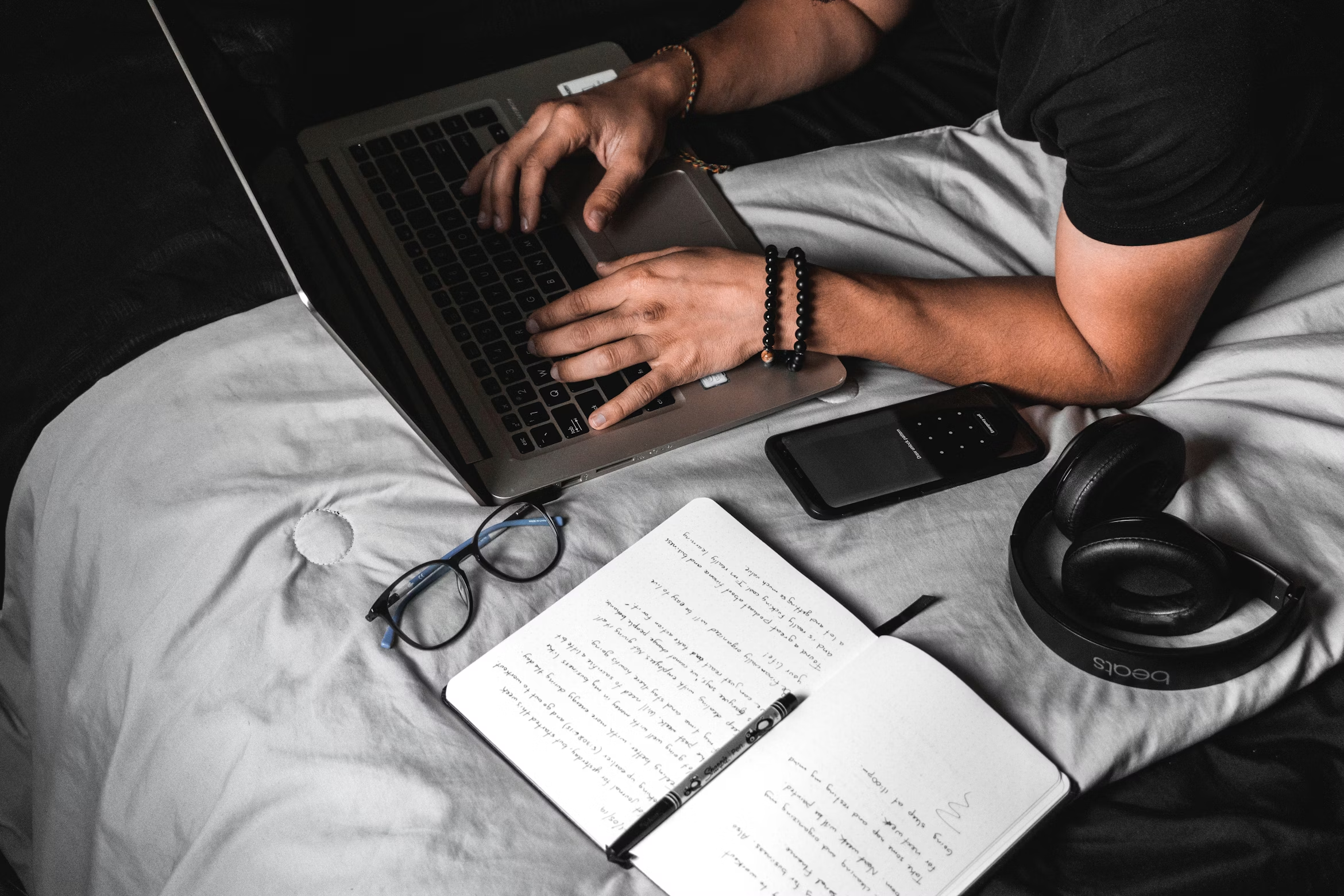The “Locked In” Phenomenon is Revolutionizing Peak Performance

“I’m locked in.”
Three words that have taken social media by storm. From TikTok study sessions to LinkedIn productivity posts, everyone’s talking about being “locked in.”
But this isn’t just another internet trend, it’s a legitimate psychological state that top performers have been using for decades, now finally getting the recognition it deserves.
So what does “locked in” actually mean? And more importantly, how can you achieve this coveted state of laser focus in a world designed to scatter your attention?
What “Locked In” Really Means (Beyond the Memes)
Being “locked in” is that rare mental state where you become completely absorbed in what you’re doing. It’s when:
- Hours feel like minutes
- Distractions don’t affect you
- Your performance feels effortless yet exceptional
- You’re operating at your cognitive peak
Think of Kobe Bryant in the fourth quarter, Stephen King writing his novels, or that one friend who can code for 8 hours straight without looking up. They’re not just focused, they’re in a completely different mental zone.

The Science Behind Getting Locked In
When you’re truly locked in, your brain enters what neuroscientists call a “flow state.” Here’s what’s happening upstairs:
Your Default Mode Network Goes Quiet: This is the part of your brain that’s constantly chattering, worrying about the future, replaying conversations, judging your performance. When you’re locked in, this mental noise disappears.
Gamma Waves Increase: These high-frequency brainwaves are associated with heightened awareness and peak cognitive performance. Elite athletes show massive gamma wave activity during their best performances.
Time Perception Shifts: Your brain’s internal clock gets hijacked. The part that usually tracks time (the prefrontal cortex) becomes less active, which is why hours can feel like minutes when you’re truly immersed.
Why 2025 Is the Year of Getting Locked In
Our attention economy has reached a breaking point. The average person now has an attention span shorter than a goldfish (8 seconds vs. 9 seconds). We’re drowning in notifications, context-switching, and what researchers call “continuous partial attention.”
But here’s the plot twist: while everyone else is getting more distracted, those who can achieve deep focus are becoming exponentially more valuable.
Deep Work Techniques That Actually Work
The Immersion Ladder Method
Instead of jumping straight into deep work, build your focus gradually:
- Level 1 (10 minutes): Single-task something simple
- Level 2 (25 minutes): Tackle one specific problem
- Level 3 (45 minutes): Work on complex, creative tasks
- Level 4 (2+ hours): Enter full locked-in mode
Why this works: Your attention is like a muscle. You wouldn’t try to deadlift 300 pounds on your first day at the gym. Build your focus strength progressively.
The Constraint Paradox
Counter-intuitively, adding constraints can enhance your focus. When options are limited, your brain stops decision-making and starts performing.
Some examples of productive constraints are:
- Write with only a pen and paper (no backspace anxiety)
- Code with no internet access (forces you to think through problems)
- Design with a 1-hour deadline (eliminates perfectionism paralysis)
The Environmental Lock-In
Your physical environment dramatically impacts your ability to get locked in. Create what researchers call “contextual cues” that signal deep work time.
- Temperature: Slightly cool (68-70°F) for optimal cognitive performance
- Lighting: Bright, natural light or full-spectrum LED
- Sound: Consistent background noise or complete silence
- Visual: Clean, minimal space with zero clutter
- Digital: All notifications off, phone in another room
Mental Immersion Strategies for Different Work Types
For Creative Work: The Divergent-Convergent Cycle
Creative tasks require a different approach than analytical ones.
Process:
Phase 1 – Divergent (30 minutes): Brainstorm freely, no judgment
Phase 2 – Convergent (60 minutes): Refine and execute the best ideas
Phase 3 – Reflection (15 minutes): Review and plan next steps
Say a Graphic designer uses this cycle for logo design. First 30 minutes: sketch everything that comes to mind. Next hour: refine the three best concepts. Final 15 minutes: prepare for client feedback.
For Analytical Work: The Problem-Solution Spiral
Complex problem-solving requires sustained mental effort.
Process:
Step 1: Define the exact problem (not the symptoms)
Step 2: Gather all relevant information
Step 3: Work through solutions systematically
Step 4: Test and iterate
Say a Data scientist uses this method for machine learning projects. Instead of jumping between different approaches randomly, they follow this spiral methodically. Result: 40% faster project completion with better outcomes.
For Learning: The Teach-Back Method
The fastest way to achieve deep understanding is to prepare to teach the material.
Process:
Study the material with the goal of teaching it
Create an outline as if you’re giving a presentation
Explain concepts out loud (even to yourself)
Identify gaps and dive deeper
Say a Medical student uses this method for complex anatomy. They study each system as if they’ll teach it to first-year students. Their retention rate increases by 60%, and they will consistently score in the top 5% of their class.
The Locked-In Lifestyle: What Changes When You Master Deep Focus
Your Relationship with Time
Before: “I never have enough time.”
After: “I have exactly the time I need for what matters most.”
Your Work Quality
Before: Constantly revising and fixing mistakes made during distracted work.
After: Getting it right the first time because you’re fully present.
Your Stress Levels
Before: Always behind, always catching up.
After: Calm confidence that comes from knowing you can handle whatever comes up.
Your Reputation
Before: Known as someone who’s always busy but never seems to finish anything.
After: Known as the person who delivers exceptional work consistently.
The Locked-In Struggles Nobody Talks About
The “I Don’t Have Time” Trap
Common thought: “I’m too busy to spend 2 hours on one thing.”
Reality: Those 2 focused hours will accomplish more than 8 scattered hours.
The FOMO Fear
The worry: “What if something important happens while I’m unreachable?” The truth: Nothing truly urgent happens in a 2-hour window that can’t wait.
The Perfectionism Paralysis
The trap: Waiting for the perfect 4-hour block with zero distractions.
The solution: Start with imperfect 25-minute sessions.
The “Locked In” Moments You Already Know (But Didn’t Realize)
You’ve actually experienced being locked in before, you just didn’t call it that.
Remember when you:
- Binge-watched an entire Netflix series and suddenly it was 3 AM?
- Got so absorbed in a video game that you forgot to eat dinner?
- Had a deep conversation with a friend and lost track of time completely?
- Cleaned your entire apartment in what felt like 30 minutes?
That’s your brain’s natural ability to achieve deep focus. The challenge is directing that same intensity toward your work and goals.

The Dark Side of Getting Locked In (And How to Avoid It)
Hyperfocus Burnout
Being locked in feels so good that it’s easy to overdo it. Signs you’re pushing too hard:
- Physical tension or headaches
- Forgetting to eat or drink
- Irritability when interrupted
- Difficulty “turning off” after work
Solution: Set hard boundaries. Use timers, schedule breaks, and have someone check on you during long sessions.
Perfectionism Paralysis
Sometimes the desire to achieve the perfect locked-in state prevents you from starting at all.
Reality check: Even 20 minutes of focused work beats 2 hours of distracted work. Start imperfectly and build from there.
Social Isolation
Deep work can become addictive, leading to neglect of relationships and social connections.
Balance strategy: Schedule social time as seriously as you schedule deep work. Both are essential for long-term success and happiness.
Your Next Locked-In Session Starts Now
Getting locked in isn’t about perfection, it’s about creating the conditions where deep focus can emerge naturally.
Start with your next work session:
- Choose ONE important task (not a to-do list)
- Eliminate ALL distractions (phone, notifications, unnecessary tabs)
- Set a clear intention (what exactly will you accomplish?)
- Begin immediately (don’t wait for the “perfect” moment)
The locked-in state isn’t reserved for elite athletes or genius programmers. It’s a learnable skill that becomes more valuable every day in our distracted world.
Ready to experience true mental immersion? Start your journey with a free Freedom trial and discover what it feels like to be completely locked in on your most important work.


